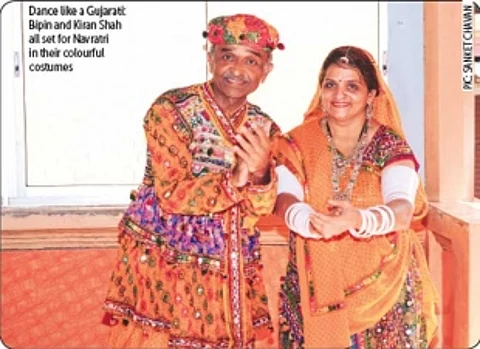

If you hear Garba beats coming from the neighbourhood, don’t be
surprised. It is that time of the year when Gujarati families in Goa are gearing
up with their colourful clothing and perfecting their Garba and Dandiya steps
for the nine-day festival, Navratri.
Mukesh Desai, President of the Panjim Gujarati Yuvak Mandal in Panjim,
owns the traditional costume, called the ‘Kedia’, which is made using 14 metres
of cloth for the top and 24 metres of cloth for the dhoti. He wears this heavy
but beautiful embellished garment for Navratri. “Originally, this was the
tradition clothing worn by the farmers in a remote village in Gujarat. They
believed that they should wear white colour while working in the fields because
of sunlight and should return home dancing with joy. That is how we dance Garba
and Dandiya today,” says Mukesh who informs that there are nearly 150 groups
that perform these dances at different venues in Goa.
Garba is meant for women while Dandiya is performed by men. However, in
Goa, the dances are performed by both. The festive cheer is quite evident at the
Shah residency in Boca de Vaca, Panjim as the family have be improvising on
their steps by watching Garba and Dandiya CDs which are available in the
market. Bipin Shah says, “My wife, Kiran, and I have been part of Navratri
dance for the past 35 years. We have won many awards for best dancer, best
dress and best dancing couple in Mapusa, Margao, Porvoirm and Panjim. Listening
to the Garba dance beats when dressed in the traditional clothing evokes an
indescribable feeling; you can’t help dancing to the beats. This year, my one
year old grandson, Nihal will also be joining us.” Bipin will be awarded the lifetime
achievement award by the Panjim Gujarati Yuvak Mandal on their 50th
Anniversary.
Though a traditional dance form, Garba has seen quite a few innovative
additions. Kiran Shah elaborates: “We have the Popat step, scooter step, 12-step
Garba, Sanedo style and Hitch style, to name a few. Other dances don’t even
have names; we know them by heart. In Dandiya there is the Panchiya style.”
Kiran’s daughter-in-law Anushri and son Mehul have also purchased Chaniya
Cholis and Kedia dhotis from Ahmedabad to go with the family theme for this
year’s festival, the colour yellow.
Shubh Solanki, 9, and his sister Minushka, 13, from
Panjim, are excited to get on the dance floor. “I have been dancing for every Navratri
I can recall. We practise at home before the festival and even my aunt teaches
us a few new steps. It is very easy to pick up. Many of my friends also attend
these dances; we inform each other of our whereabouts so we can meet up and
dance together,” says Shubh, who is already excited about the traditional clothing
his mother has purchased for him.